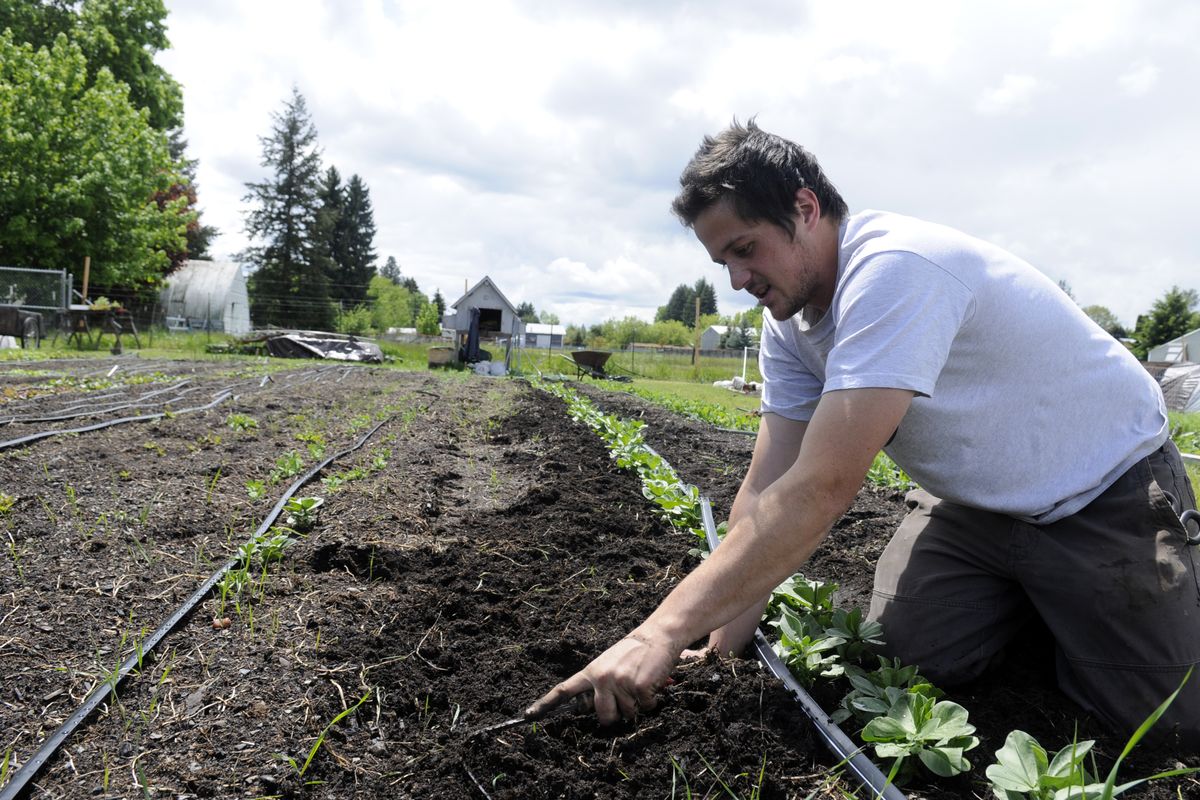North Idaho backyard garden is a joint project
Subscribers get share of Dalton Gardens plot’s bounty

Cabbage plants unfurled purple-tinted leaves in the garden behind Gayla Moseley’s house while a young rooster practiced its crowing.
Once an empty lot, the land now resembles a tiny farmstead. By summer’s end, the orderly rows of vegetables – fertilized organically with chicken manure – will appear as fresh produce on local families’ tables.
Moseley offered extra space on her one-acre lot in Dalton Gardens to Kootenai Environmental Alliance’s Community Roots program, which is using the land for a community-supported agriculture project.
Community-supported agriculture relies on subscribers to offset the upfront costs of farming. People purchase shares in the venture in return for part of the harvest.
The 30 subscribers of the Dalton Gardens project will get a box of produce every other week through October. Half of the shares were sold for $200. The rest are available to low-income families, who will pay about $10 for each box of produce. Food stamps are accepted.
“Part of our core value is making sure that food – good food – is getting out to people who need it, not just the rich and the privileged,” said Korrine Kreilkamp, the Community Roots coordinator.
Locally grown food is good for the environment, too, she said. Since the produce isn’t trucked long distances, it reduces fossil fuel emissions.
This year’s focus is salad fixings – fast-growing radishes, spinach and other greens that can be harvested and replanted. Caleb Goss, who apprenticed at an organic farm, is the contract grower. When the weather warms up, he’ll also seed fava beans, artichokes and watermelons. He hopes to plant inspiration as well.
“If I could, I’d like to get some friendly competition out here,” Goss said. “I’d like to get people saying, ‘Oh, I could plant a big garden in my backyard.’ ”
Dalton Gardens, with its fertile soil and large lots, is ideal for small-scale agriculture, he said. In the early 1900s, the community north of Coeur d’Alene was an orchard district that grew apples, pears and cherries. The ground is still productive, but many families simply grow grass.
“There’s a lot of talk about preserving the rural character of the area,” Kreilkamp said. “This is another way to utilize the land and preserve that rural charm.”
Moseley has been watching the transformation of her back lot with satisfaction. Scarlet radishes are nearly ready for harvest. The 24 chickens, which started out as day-old yellow puff balls, are maturing into a multicolored flock of Rhode Island reds, gray-and-white Barred Rocks and a snowy, South American breed called Araucanas. By next year, the program could offer eggs.
The project is drawing attention from Moseley’s neighbors. Scott and Linda Stranger, who live to the north, offered part of their land to expand the garden. A neighbor to the south donated horse manure for fertilizer. First-graders from nearby Dalton Gardens Elementary School came over to plant pumpkins, which they’ll harvest next fall.
Moseley likes the idea of putting the land back into production. And “it sure beats mowing,” she said.